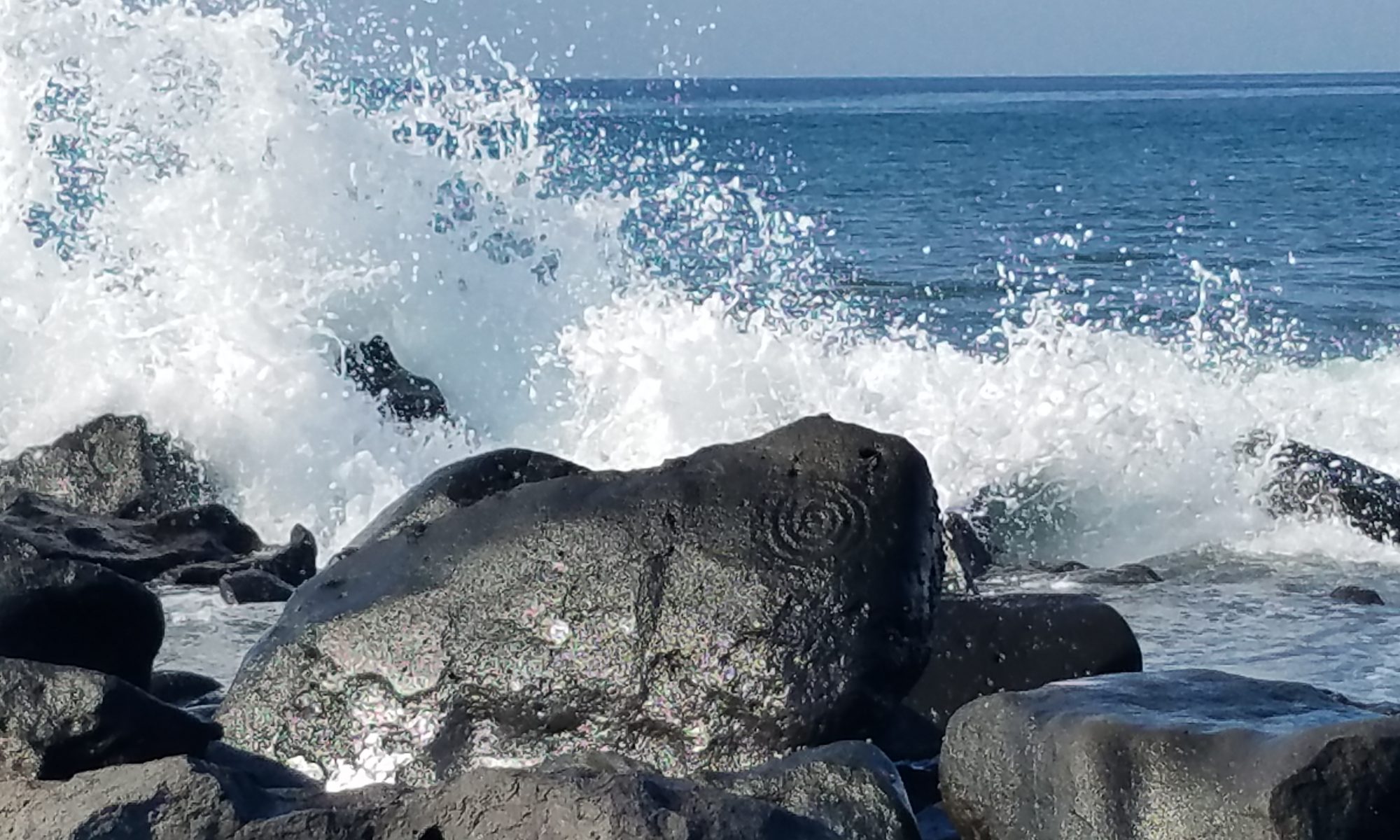Baptism of our Lord; January 13, 2019
Pastor Rebecca Ellenson; ICCM
It was the middle of the night in Mansfield MN, in the winter of 1992 when I got a call from the hospital. Lenore had gone into labor early. I was pregnant too and we were due about the same time. The baby was two months early and the parents wanted me to come quickly to baptize him before he was airlifted to Rochester’s neonatal unit. They had already loaded Lenore into an ambulance for transport when I got there, but Brian, the baby’s father met me and led me to the delivery room where the doctors and nurses were circled around the tiniest little boy. His fingers were like paper matches, his head the size of a tangerine.
As someone helped me gown and mask, I asked for water. I opened my occasional services manual and I dipped my finger in the medicine cup filled with sterile water I had been given. I looked to Brian and asked the baby’s name. Dripping a few drops on his head I said, “Paul, I baptize you in the name of the Father, the Son, and the Holy Spirit.” While the medical staff inserted an umbilical cord-IV I made the sign of the cross on Paul’s tiny forehead, “Child of God, you have been sealed by the Holy Spirit and marked with the cross of Christ forever.” I invited the medical staff to join with me in the Lord’s prayer beforee they whisked him off to the helicopter.
As Brian and I returned to the room Lenore had been in he asked, “Is that all there is to it? Why do you do all that other stuff in church then?” I explained that in infant baptism there are three promises—the promise of God to claim the child in Christ, the promise of the parents and sponsors to raise the child in faith, and the promise of the congregation to support the family and surround them with the resources of faith, welcoming the child as a fellow member of the body of Christ. I reassured him that when Paul was strong enough to join us in worship, we would complete the other parts. A few months later we did just that. It was a happy day in church then, with little Paul out of danger, his big sisters standing with his parents and sponsors, the congregation breathing sighs of relief and joy after carrying the family in their prayers for months. I often think of that baptism, the fear that first night in the hospital, the many sleepless nights for the family… the three promises of claiming love and all the ways they work.
Here in this community of faith we come from all different denominational backgrounds, traditions and locations. Most of you have primary membership in a congregation in the USA or Canada. Some of you were baptized as infants, some as teens or adults. There may be some of you here today who have never been baptized—if that’s the case I’d love to talk with you more privately. Our various doctrines could divide us, even as the scriptures about Baptism indicate the unifying aspect of baptism. No matter the age, the setting, or the method—the waters of baptism claim us, hold us, call us to live in God’s love, to love others with God’s love, to know that we are loved with an immeasurable grace.
Paul says in 1 Cor 12: 13 “for we were all baptized by one Spirit so as to form one body—whether Jews or Gentiles, slave or free—and we were all given the one Spirit to drink.” We could add, whether Baptists or Lutherans, Evangelicals or Progressives… we are one body in Christ. And in Galatians 3: 27 Paul wrote, “for all of you who were baptized into Christ have clothed yourselves in Christ.” It is traditional to wear white for baptism, symbolizing the cleansing of our sins and emphasizing that we put on Christ. In Ephesians 4: 4-6 Paul reiterates again, “There is one body and one Spirit, just as you were called to on hope; one Lord, one faith, one baptism; one God and Father of all, who is over all and through all in all.”
Baptism is God’s embrace, welcoming us into the fellowship of the church. We are united with Christ in baptism into the life, death and resurrection of our Lord. In the passage from the Old Testament today we can hear God’s affirming claim on our lives, “Do not fear, for I have redeemed you, I have called you by name, you are mine. When you pass through the waters, I will be with you; and through the rivers, they shall not overwhelm you. For I am the Lord your God, the Holy One. You are precious in my sight and honored, and I love you. …I created you for my glory!”
Six years ago, Steve and I celebrated our 10th wedding anniversary with a trip. We were thrilled to be able to visit Turkey, spending a day in the ancient city of Ephesus, where Paul preached to the Gentile converts. It’s a stunning archeological site from about the time of Christ with miles of marble streets and an amphitheater that could seat 15,000 people. There are crosses carved into the doorposts juxtaposed with carvings of Roman gods and goddesses. We stood on one spot and saw a temple to one of the Roman gods, the Basilica of St. John, and the ruins of an early Mosque.
For me, though, the most amazing thing I saw was a baptismal font, carved in the shape of a cross and a coffin at the same time. Each arm of the cross was a stairway, descending or ascending, 6 feet from a 6-foot long trough. I read that in those days the candidate for baptism would descend one side and lie down into the watery tomb three times, with the priest asking before each dunking, the first time “Do you believe in God the Father,” the candidate would rise up sputtering for breath, “I Believe” the second time “Do you believe in God the Son,” and the third time “Do you believe in God the Holy Spirit.”
After their three responses the baptized would rise and ascend the stairs on the other side, with their new Christian name, having died to sin, having been buried with Christ, rising to new life in forgiveness and promise on the other side. When I saw that font I recalled Paul’s words from Romans chapter 6: “All of us who were baptized into Christ Jesus were baptized into his death. We were therefore buried with him through baptism into death in order that, just as Christ was raised from the dead through the glory of the Father, we too may live a new life. For if we have been united with him in a death like his, we will certainly also be united with him in a resurrection like his.”
John the Baptist may have been one of the members of the community of the Essenes, an ascetic group of Jews from that time period who practiced a strict adherence to Jewish law. They had a special concern for purity, and a belief in the imminent coming of Messiah. John’s baptism for forgiveness and repentance may have been an adaptation of the Jewish patterns of ritual cleansing. John was doing something new that day when Jesus and the other people were baptized.
Luke tells us that the heaven was opened and God spoke directly to Jesus. It’s a moving and dramatic scene – Jesus emerging from the waters of baptism as the Spirit alights upon him. What power and symbolism there is in that scene, an Epiphany—a shining revelation of God’s presence encountering Jesus – and, through Jesus, all of us. God removes all that separates us from God and meets us where we are.
This is the mystery and the power that Baptism offers– that God comes to meet us where we are and as we are, with water and the word that we might know that we, too, are beloved children of God and that God is well pleased also with us.
This week, as you swim, or wash the dishes, or drink your first glass of water each day, or as you bathe or wash your hands, even as you gaze at the waves or the sunset over the ocean, I invite you to make the sign of the cross on your foreheads in memory of God’s claim on you.
Pastor Adam Hamilton handed out waterproof tags for his congregants to hang in their showers with these words. “Lord, as I enter the water to bathe, I remember my baptism. Wash me by your grace. Fill me with your Spirit. Renew my soul. I pray that I might live as your child today, and honor you in all that I do.” Perhaps you could post a little note in your own baño with what your baptism means to you.
On this Sunday we remember the Baptism of our Lord. And we remember our baptismal identity as part of our celebration. Today we can remember that Jesus came as one of us and in our union with him we are also caught up in the power of the creating and redeeming God. We are clothed in Christ, we are one body in one baptism.

